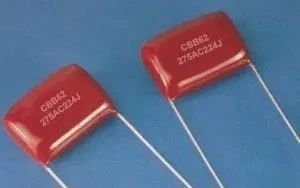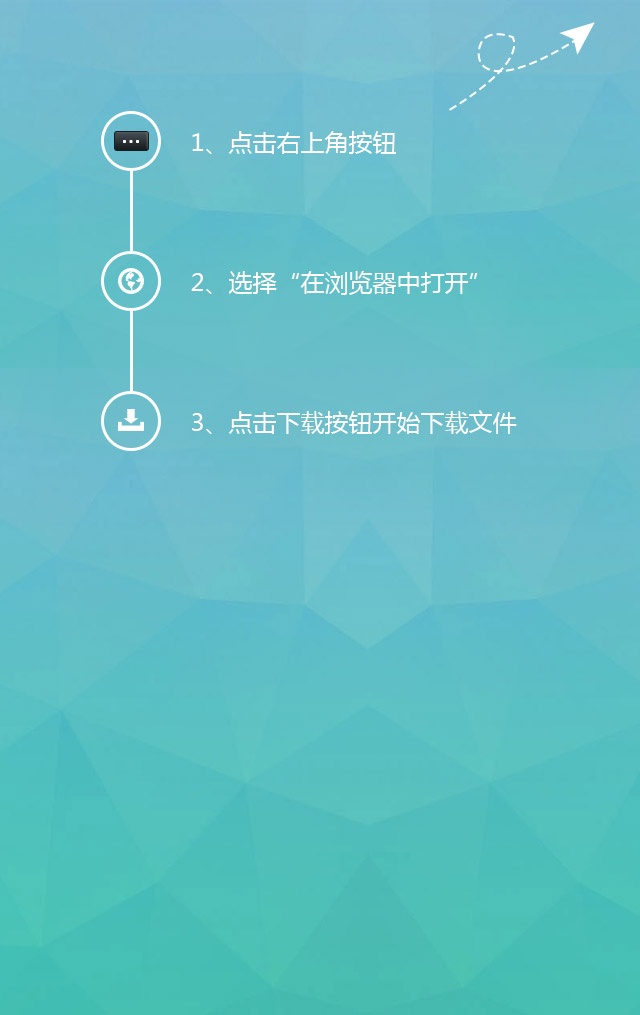Components | One article takes you through the concept of "capacitors" in electronic components
Electronic components are a general term for components and devices.
Electronic components: such as resistors, capacitors, inductors, etc. that do not generate electrons themselves and have no control or conversion effect on voltage and current, known as "passive devices"
Electronic devices: such as transistors, diodes, field-effect transistors, integrated circuits, etc., which can generate electrons themselves and have control and conversion effects on voltage and current, known as "active devices"
Aluminum electrolytic capacitor
① Aluminum electrolytic capacitors belong to polarized capacitors, which are made with aluminum foil as the positive electrode, aluminum oxide on the surface of the aluminum foil as the dielectric, and electrolyte as the negative electrode.
② Aluminum electrolytic capacitors have a large volume and capacity. Compared with non-polar capacitors, they have low insulation resistance, high leakage current, poor frequency characteristics, and their capacity and loss will change with the surrounding environment and time, especially when the temperature is too low or too high, and they will also fail if not used for a long time.
③ Aluminum electrolytic capacitors are limited to low-frequency and low-voltage circuits.
Zhongchi will explain electronic components in stages for everyone. In this issue, let's learn about capacitors together.
capacitor

1、 Structure and Definition of Capacitors
Capacitors are used to store charges, block DC, and couple AC signals.
(1) When a voltage is applied between two metal electrodes, charges are stored on the electrodes, so capacitors are energy storage components.
(2) Parallel connected to both ends of the power supply for filtering purposes
(3) Connect in series to bypass AC signals at both ends of the resistor
(4) Connected in series in a circuit, blocking the DC path and coupling AC signals.
(5) Cooperate with other components to form a resonant circuit, generating sawtooth waves, timing, etc.

2、 Main parameters of capacitors
1.1 Unit:
The nominal capacity of a capacitor (the ability of the capacitor to store charge) is called the nominal capacitance, which is related to the electrode area and dielectric material. The unit of capacitance is Farad, abbreviated as F, and the symbol is "F".
Due to the large size of the Farad unit, the capacity unit of capacitors in practical use is often expressed as one millionth of a microfarad (μ F) of (F). In circuit diagrams, only one "μ" is usually written. In practical use, sometimes microfarads (μ F) are used as units of one millionth of a picofarad (pF), and on circuit diagrams, only one "p" is usually written. The relationship is as follows:
(1) If the potential difference between two stages of a capacitor with a capacity of 1 reservoir is 1 volt, then the capacitance of this capacitor is 1 volt, that is, C=Q/U
Q (charge on the electrode), C (capacitance of the capacitor), U (voltage applied to the electrode)
Example: A 100pF capacitor is applied to a 10V power supply, and the charge charged on the two poles is proportional to the voltage between the poles:
(2) The size of a capacitor is not determined by Q (charge) or U (voltage), that is, C=ε S/4 π kd
ε is an electrical constant, S is the area of one surface of a capacitor plate, d is the distance between the capacitor plates, and k is the constant of electrostatic force.
(3) Common parallel plate capacitors have a capacitance of C=ε S/d
ε is the dielectric constant of the dielectric between the plates, S is the area of the plates, and d is the distance between the plates.
(4) Definition formula: C=Q/U
The formula for calculating the potential energy of a capacitor is E=CU ²/2=QU/2=Q ²/2C
Calculation formula for parallel connection of multiple capacitors: C=C1+C2+C3+...+Cn
Calculation formula for series connection of multiple capacitors: 1/C=1/C1+1/C2+...+1/Cn
1.4 Temperature coefficient
The temperature coefficient refers to the relative change in the capacitance of a capacitor for every 1 ℃ change in temperature within a certain temperature range. The smaller the temperature coefficient value, the better the performance of the capacitor.
1.5 Rated voltage
When a capacitor is working normally, the maximum DC working voltage that ensures the insulation medium is not broken down by the voltage applied to the two plates, which is the rated DC working voltage of the capacitor, abbreviated as rated voltage (also known as "withstand voltage"), is related to the type and thickness of the medium.
The selection of capacitors must determine different withstand voltage values based on the different parts of the capacitor in the circuit. The working voltage of the capacitor should be lower than the rated voltage value marked on the capacitor, otherwise it may cause the capacitor to be broken down and damaged due to overvoltage.
1.6 Loss factor
The loss factor, also known as the tangent of the loss angle of a capacitor, is used to indicate the magnitude of the capacity loss of the capacitor. The smaller the value of the loss factor, the better the quality of the capacitor.
1.7 Leakage current
The dielectric material of a capacitor is not an absolute insulator. Under certain operating temperature and voltage conditions, there will also be current passing through it, which is called leakage current. The leakage current of electrolytic capacitors is generally higher, while other types of capacitors have lower leakage current.
1.8 Frequency Characteristics
Frequency characteristics refer to the performance exhibited by capacitors at different frequencies (i.e. the characteristics of the electrical parameters of capacitors changing with the operating frequency of the circuit). Capacitors with different dielectric materials also have different maximum operating frequencies.
Intelligent use of high-frequency ceramic capacitors or mica capacitors with smaller capacitance in high-frequency circuits, while capacitors with larger capacitance (such as electrolytic capacitors) can only work normally in low-frequency circuits.
1.9 Insulation resistance value
The insulation resistance value (leakage resistance value) of a capacitor is an important indicator for measuring the insulation performance. The larger the insulation resistance value, the smaller the leakage current of the capacitor and the better its quality. The normal insulation resistance value should generally be above 5G Ω.
3、 Type of capacitor
1. Model of capacitor

Naming and meaning of domestic capacitor models

2.2 Types of foreign capacitors
(1)第一部分用字母表示电容器类型

(2) The size of a capacitor is not determined by Q (charge) or U (voltage), that is, C=ε S/4 π kd
ε is an electrical constant, S is the area of one surface of a capacitor plate, d is the distance between the capacitor plates, and k is the constant of electrostatic force.
(3) Common parallel plate capacitors have a capacitance of C=ε S/d
ε is the dielectric constant of the dielectric between the plates, S is the area of the plates, and d is the distance between the plates.
(4) Definition formula: C=Q/U
The formula for calculating the potential energy of a capacitor is E=CU ²/2=QU/2=Q ²/2C
Calculation formula for parallel connection of multiple capacitors: C=C1+C2+C3+...+Cn
Calculation formula for series connection of multiple capacitors: 1/C=1/C1+1/C2+...+1/Cn





4、 Identification of capacitors
There are three methods for representing the capacity of capacitors: direct marking method, text symbol method, and color code method
1. Direct labeling method
Mark the capacity, rated voltage, maximum operating temperature, and deviation level of the capacitor directly on the capacitor body.
The direct scaling method is often used for capacitors with slightly larger volumes. Sometimes, due to the small area of the capacitor, only the value of the capacitor is labeled and the unit is omitted. However, according to practical experience, there is a rule that when the value includes a decimal point, the unit is μ F (nanofarads). If the 4-digit/2-digit number without a decimal point indicates the capacitance, the unit is pF (picofarads).
Sometimes, n is used to separate the integer and decimal parts on imported capacitors, or R is used to represent the decimal point. For example:
2n9=2.9nF=2900pF
R56 μ F means R56 μ F=0.56 μ F



2. Digital annotation method
The numerical annotation method refers to the use of numbers or a combination of numbers and letters to annotate the main parameter values of capacitors.
Generally, a 3-digit number is used to represent the capacitance of a capacitor, with the unit being pF. The first two digits represent the significant number of the capacitor capacitance, and the third digit represents how many zeros are added after the significant number (i.e. multiplied by 10x, where x is the third digit)
Example:


The first and second digits are valid values, so 10 is 10
The third digit is the multiplicand, if the multiplicand is 4, it is 10 to the power of 4, and the others are similar. (Special case: 9 represents a capacitance between 1~9.9pF, and 9 is 10-1, which is 0.1)
Example: If the capacitance is labeled as 339, the nominal capacitance is 33 × 10-1pF=3.3pF
The fourth position is the allowable deviation, Z:+80%, -20%. The allowable deviation can refer to the following figure.

The meaning of allowable deviation letters for capacitors in the direct labeling method
3. Color ring identification method


The color code representation method on capacitors is shown in the following figure. The first and second colors along the lead direction represent the significant digits of the capacitor, and the third color represents the number of zeros that should be added after the significant digits, in pF.

10×105pF=1000000pF=1μF
Example: Along the lead direction in the above figure, if the first color ring is blue, the second color ring is still gray, and the third color ring is orange, then the number is 683. According to the above method, the capacitance value can be obtained as:
68×103pF=68000pF=0.068μF
The figure shows that along the lead direction, the first color ring is red, the second color ring is still red, and the third color ring is yellow. Therefore, the number is 224. According to the above method, the capacitance value can be obtained as:
22×104pF=220000pF=0.22μF
Assuming the colors along the line are brown, black, and green, with a number of 105 and a capacitance value of:
10×105pF=1000000pF=1μF
4. Unit Representation Method
Unit representation is a recommended marking method by the International Electrotechnical Commission, usually using the letters m (10-3F), μ (10-6F), n (10-9F), p (10-12F) to indicate the order of magnitude of capacitance and the decimal point position.
Example: 4n7 represents 4.7 × 10-9F=4.7nF=4700pF
6p8 represents 6.8 × 10-12F=6.8pF
3 μ 3 represents 3.3 × 10-6F=3.3 μ F
5. Other methods of representing capacitance
(1) R represents the decimal point, and the number is preceded by R to indicate the capacitance. This type of capacitor is generally only a few tenths of a micrometer.
Example: R33 represents 0.33 μ F; R10 represents 0.1 μ F
(2) The notation of non-standard units can be used to determine the capacitance based on experience. As follows:
① If represented by 1-4 digits, the unit of electrical capacity is pF.
Example: 2200 represents a capacitance of 2200pF; 39 represents a capacitance of 39pF
② Expressed in terms of zero point/zero point, its unit is μ F
Example: 0.1 represents a capacitance of 0.1 μ F; 0.047 represents a capacitance of 0.047 μ F
6. Method for expressing allowable deviation of capacitors
6.1 Direct Representation Method
The markings on the capacitor indicate ± 5%, ± 10%, ± 29%, etc; There is also an allowable deviation level chart.
Generally, capacitors are commonly used in grades I, II, and III, while electrolytic capacitors are used in grades IV, V, and VI, depending on their intended use.
Generally, capacitors are commonly used in grades I, II, and III, while electrolytic capacitors are used in grades IV, V, and VI, depending on their intended use.

6.2 Alphabet Representation

Capacitors with allowable error values of 5%, 10%, and 20% should be used the most, so the corresponding letters should be remembered.

7.2 Surface mount polarized capacitors

(2) Surface mount polarized tantalum electrolytic capacitor
The top surface of the surface mounted polarized tantalum electrolytic capacitor has a black or white line, which is a positive polarity mark, and the capacitor capacity code and withstand voltage value are also on the top surface.

5、 Classification and Understanding of Capacitors
1. Classification
Adjustable by capacity: fixed capacitor, variable capacitor, fine tuned capacitor
Divided by polarity: non-polar capacitors, polar capacitors
Divided by dielectric material: organic dielectric capacitor, inorganic dielectric capacitor, gas dielectric capacitor, electrolyte capacitor
2. Get to know
2.1 Appearance and characteristics of fixed capacitors
(1) Identification of fixed non-polar capacitors
Classification I
① Fixed non-polar capacitor is one of the widely used electronic components in electronic devices, and it is also the most diverse type of electronic component.
② Classified by medium, there are paper capacitors, oil immersed paper sealed capacitors, metalized paper capacitors, mica capacitors, organic film capacitors, glass glazed capacitors, and ceramic capacitors



① Paper capacitors are non-polar, organic dielectric capacitors, usually made by using two metal foils as electrodes, separated and overlapped by capacitor paper in the middle.
② The process is simple, the price is low, the volume is large, the loss is high, the stability is poor, and there is a large inherent inductance, which is not suitable for use in circuits with high frequencies.
③ Except for oil immersed paper sealed capacitors and metalized paper capacitors, which have limited applications, other paper capacitors are now basically not needed.
II Mica capacitors
① Mica capacitors belong to non-polar and inorganic dielectric capacitors, using mica as the dielectric.
② Advantages: low loss, high insulation resistance, low temperature coefficient, high capacitance accuracy, and good frequency characteristics.
③ Disadvantages: High cost, small capacitance, suitable for high-frequency circuits.

III. Ceramic capacitors
① Ceramic capacitors are also known as ceramic capacitors or monolithic capacitors. Ceramic capacitors are capacitors with ceramic dielectric materials.
② Ceramic capacitors have small volume, stable performance, good heat resistance, and are suitable for high-frequency circuits.

① Polyester capacitors
Polyester capacitors belong to non-polar, organic dielectric capacitors, which are made of polyester film as the dielectric and metal foil or metalized film as the electrode.
Polyester capacitors have small volume, large capacity, low cost, good insulation performance, and excellent heat resistance, voltage resistance, and moisture resistance.
Poor stability, suitable for circuits with low stability requirements.

② Polystyrene capacitors
Polystyrene capacitors belong to non-polar, organic dielectric capacitors, which are made of polystyrene film as the dielectric and metal foil or metalized film as the electrode.
Polystyrene capacitors have low cost, low loss, high precision, high insulation resistance, and low temperature coefficient.
Poor resistance to low temperature and high frequency, and the charge after charging can remain unchanged for a long time.


① Glass glazed capacitors belong to non-polar and inorganic dielectric capacitors, and their dielectric is usually a thin sheet pressed with glass glaze powder. By adjusting the ratio of glaze powder, capacitors with different properties can be obtained.
② Glass glazed capacitors have a high dielectric constant, high temperature resistance, strong moisture resistance, and low losses.
Classification I
① The characteristics and application scenarios of fixed polarized capacitors. Electrolytic capacitors are capacitors that form oxide films on metal plates as dielectrics through electrochemical methods.
② The anode can be made of metals or alloys such as aluminum, tantalum, niobium, titanium, etc., the cathode is a liquid or semi fluid electrolyte, and the medium is a metal oxide film.
③ The identification of fixed polarity capacitors refers to a type of capacitor with positive and negative pins.
④ This type of capacitor can be divided into aluminum electrolytic capacitors and tantalum (or silver) electrolytic capacitors according to the different positive electrode materials.
⑤ The two leads of this type of capacitor lead out the positive and negative poles of the capacitor respectively, so it cannot be connected incorrectly in the circuit.

Aluminum electrolytic capacitor
① Aluminum electrolytic capacitors belong to polarized capacitors, which are made with aluminum foil as the positive electrode, aluminum oxide on the surface of the aluminum foil as the dielectric, and electrolyte as the negative electrode.
② Aluminum electrolytic capacitors have a large volume and capacity. Compared with non-polar capacitors, they have low insulation resistance, high leakage current, poor frequency characteristics, and their capacity and loss will change with the surrounding environment and time, especially when the temperature is too low or too high, and they will also fail if not used for a long time.
③ Aluminum electrolytic capacitors are limited to low-frequency and low-voltage circuits.


III Tantalum (or Niobium) Electrolytic Capacitor
① Tantalum electrolytic capacitors belong to polarized capacitors, which are made with tantalum metal sheet as the positive electrode, tantalum oxide film on its surface as the dielectric, and manganese dioxide electrolyte as the negative electrode.
② Tantalum electrolytic capacitors have better temperature characteristics, frequency characteristics, and reliability than aluminum electrolytic capacitors, with minimal leakage current, high charge storage capacity, small errors, and long lifespan. However, they are expensive and suitable for high-precision electronic circuits.

IV Surface mounted Tantalum Electrolytic Capacitor
① Surface mount tantalum electrolytic capacitors come in rectangular and cylindrical shapes, with three types of packaging: bare chip, plastic sealed, and end cap, with plastic sealed being the main type.
② Surface mount tantalum electrolytic capacitors are smaller in size than surface mount aluminum electrolytic capacitors and have better performance, such as low leakage, good negative temperature performance, low equivalent series resistance, and excellent high-frequency performance.

V bipolar electrolytic capacitor/non-polar electrolytic capacitor
Bipolar electrolytic capacitor is composed of two polarized capacitors packaged together. Due to the cancellation of the two positive and negative poles, it is also known as non-polar electrolytic capacitor. Its two plates have undergone the same treatment and can be used in electroacoustic frequency division circuits and pulse circuits.
VI Other types of electrolytic capacitors
Aluminum electrolytic capacitors also have a dual capacitor combination structure, with two types of pins: three terminal and four terminal.
Three terminal combination capacitors are divided into two types: the common positive electrode type (where the positive electrodes of the two internal capacitors are connected as a common positive electrode) and the common negative electrode type (where the negative electrodes of the two internal capacitors are connected as a common negative electrode).
The two capacitors inside the four terminal combination capacitor are independent of each other.
2.2 Appearance and Characteristics of Adjustable Capacitors
(1) Classification of Adjustable Capacitors
Classified by their structure: single variable capacitor, double variable capacitor, and multi variable capacitor;
Classified by their media: air dielectric variable capacitors, organic film dielectric variable capacitors
Classified by their functions: can be divided into variable and semi variable (fine tuned) capacitors

(2) Single variable capacitor

① A single variable capacitor consists of two sets of parallel copper or aluminum metal plates, one set is fixed (fixed plate), and the other set is fixed on the rotating shaft and can rotate (moving plate).
② When the rotor rotates with the shaft, it can rotate into the gap of the stator, causing a change in the relative area of the two plates and a corresponding change in the capacitance of the capacitor. When all the moving pieces are screwed into the fixed piece, the capacitance is at its maximum; When all are rotated out, the capacitance is minimized.
(3) Dual variable capacitor

A dual variable capacitor is composed of two single variable capacitors combined, with two sets of fixed plates and two sets of moving plates connected to the same shaft. When adjusting, the capacitance of the two variable capacitors is synchronously adjusted.
(4) Air variable capacitor

① The dielectric between the stator and rotor of an air variable capacitor is air.
② Features: easy production, low cost, high insulation resistance, low loss, good stability, good high-frequency characteristics, low static noise, large volume, etc
(5) Organic thin film variable capacitor

① The dielectric material filled between the stator and rotor of the organic thin film variable capacitor is an organic thin film.
② Features: Small size, low cost, large capacity, poor temperature characteristics, etc.
2.3 Fine tuning the appearance and characteristics of capacitors

Fine tuned capacitors, also known as semi adjustable capacitors, have a capacitance that can be adjusted within a small range. Often used as compensation capacitors or correction capacitors in various tuning and oscillation circuits.
Semi adjustable capacitors generally do not have handles and can only be adjusted with screws and screwdrivers, so they are commonly used in places where frequent adjustment is not necessary.

推薦
-

-

QQ空間
-

新浪微博
-

人人網
-

豆瓣

